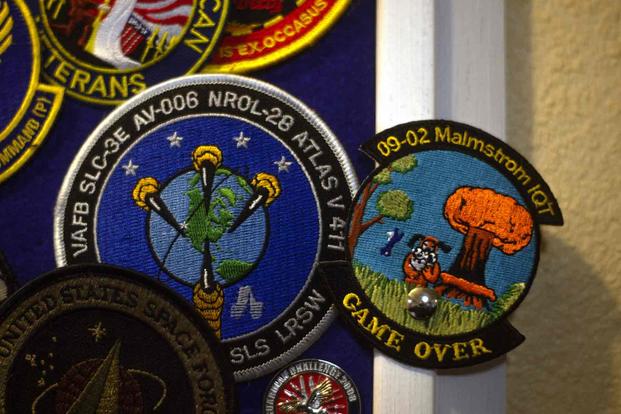This story, part of a series of investigative reporting projects by Military.com on service member and veteran health, was supported by the Pulitzer Center.
Danny Sebeck was shaving on an August day in 2022, when he spotted a lump on his neck he hadn't noticed before. It was probably nothing, he thought.
Later that month, he was talking with a close friend who said he had noticed a similar bump, too. The two had served together at Malmstrom Air Force Base, Montana, as missileers -- a high-stress job in which young officers are stationed below ground in launch control centers to keep careful watch over and, if called upon, fire America's nuclear intercontinental ballistic missiles.
While Sebeck was feeling OK, his friend was experiencing fatigue, night sweats and swollen lymph nodes and decided to go to his doctor. Shortly after, his friend learned he had non-Hodgkin lymphoma, an aggressive form of cancer that can be fatal to nearly one-third of those who receive a diagnosis, according to the American Cancer Society.
Read Next: Here Are Soldiers' Top Choices for First Duty Stations
Sebeck was worried and quickly sought out doctors of his own. The 42-year-old husband and father had never been sick, never broken a bone, never had stitches, never spent a night in the hospital. But he'd heard the rumors.
For years, it was an open secret among missileers that the Cold War-era missile alert facilities and launch control centers where they'd spend days sleeping, eating and staying on alert in case of nuclear armageddon were filled with things that might get them sick -- carcinogens such as PCBs, lead paint, asbestos and tainted water. And every missileer veteran had at least one close friend who was battling a form of cancer.
"In the back of my mind, I was like, 'I bet I have the same cancer this guy has,'" Sebeck told Military.com. "There was too much in common with this. We're about the same age; we both worked at the same bases and places."
His gut feeling was right, and the next month, in September 2022, Sebeck was diagnosed with non-Hodgkin lymphoma.
Military.com spent the past year reporting on missileers and their struggle with cancer. Read more about that work here.
Sebeck, an active-duty Space Force officer, began researching other cases of missileers diagnosed with cancer, an effort that eventually culminated in "The Malmstrom Initiative" slides, a presentation he crafted that outlined alarming indications of cancer clusters in the community. When the presentation leaked to the press, it kicked off a scramble to figure out what is making so many missileers sick, including a major new study now underway by the Department of the Air Force.
A monthslong investigation by Military.com that included government record requests, a two-day site visit to one of the nation's nuclear missile bases, and dozens of interviews with current and former Air Force missileers, as well as the relatives of some who have passed away, found that the U.S. government has overlooked evidence of cancer clusters. Two separate small studies of missileer cancer clusters in the early 2000s failed to recognize the growing problem in the community, with that lack of recognition making it difficult for some missileers to prove to the Department of Veterans Affairs that their illnesses were related to military service, a precursor to securing some benefits.
The military branches also appear to have failed to properly account for contaminants that have been linked to cancer for decades, particularly PCBs, which are still prevalent at unsafe levels in some missile facilities, according to testing done in the wake of the Sebeck presentation.
Instead, the Air Force spent decades telling service members that it was safe, that they could descend into the ground to serve their countries without undue risk, while it was simultaneously aware that threats were present: Official documents are littered with references to the dangerous chemicals and substances that would surround airmen.
John Heiser, who had been stationed at Minot Air Force Base in North Dakota for four years as a missileer, immediately thought of the old manuals he'd leafed through as a young officer when he was diagnosed at 30 years old with non-Hodgkin lymphoma.
Those manuals had warned about the strange, sticky oily substance -- polychlorinated biphenyls or PCBs -- which seemed to be in a lot of the equipment in the launch control center.
"Everything had warnings all over the place about pieces of equipment," Heiser told Military.com.
The Toxic Substances Act of 1976 outlawed many carcinogens, including asbestos and PCBs, both of which were used in the construction of missile systems and facilities. Nearly two decades later, in a 1994 Government Accountability Office report, the military services, including the Air Force, admitted they had not done enough to clean up those sites or follow the Environmental Protection Agency's guidelines.
"Although the Toxic Substances Control Act has been in existence for more than 15 years, DoD installations are still not meeting the EPA requirements regarding monitoring, storing, labeling, and disposing of PCB items," the 1994 report says. "In some cases, installations have not corrected problems even when cited by EPA or other monitoring agencies for violations, such as not performing periodic inspections or not cleaning up spilled PCB material."
These issues seemed to boil over in 2001, when the Department of the Air Force was notified that three service members at Malmstrom had been diagnosed with lymphoma, prompting an environmental study. Possible toxins ranging from diesel fuel, PCBs, contaminants from burnt paper tapes, biological exposure from standing water and sewage backup, pesticides, herbicides, chlorophenols and carbon dioxide were cited in the report.
"I remember discussions about previous missileers and a history of people being diagnosed with cancer," said Marie Naidas, a missileer who served at Malmstrom during the 2001 study. She said many missileers eagerly awaited the results. "It was something we knew about back then."
But officials proclaimed all was well.
"Extensive air, water and soil sampling indicates that the workplace is free of health hazards," the 2001 report detailed. "We consider the work area to be a safe and healthy environment for your personnel."
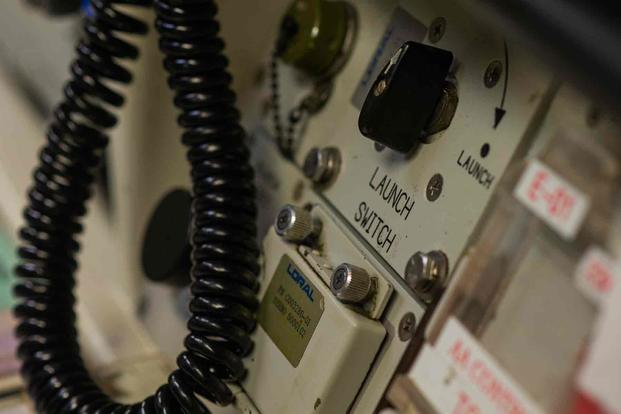
In a follow-up memo in 2003, Air Force officials pitched the idea of a long-ranging epidemiological study. It never happened. Two years later, another study doubled down once more. "We believe that there is not sufficient evidence to consider the possibility of a cancer clustering to justify further investigation," officials wrote.
For decades, the problem went ignored, and those concerns were relegated to watercooler talk for missileers who'd warn colleagues about friends and former airmen diagnosed with cancer at a young age.
More than two decades after the initial 2001 study, in January 2023, Sebeck's "The Malmstrom Initiative" started circulating online.
The presentation detailed 36 cases in which missileers who had been stationed at Malmstrom were diagnosed with a type of cancer. Ten of the airmen who had received cancer diagnoses, according to Sebeck's research, developed non-Hodgkin lymphoma. Two developed Hodgkin lymphoma, and 24 developed other forms of cancer. Overall, eight of the 36 missileers with cancer diagnoses, the majority of whom served at Malmstrom sometime between 1997 and 2007, had died.
It sparked a major issue for the Space Force, which was created in late 2019 and relies heavily on transfers from the other services to fill its ranks. A fair number, roughly 400, of the service's current officers are former missileers.
A few weeks after Sebeck's slide deck was published online, Air Force Global Strike Command authorized a new wide-ranging study -- one that looked at all three of the nation's intercontinental ballistic missile bases, as well as all jobs related to protecting, maintaining and supporting them, to determine their risk.
It's a widespread study, which is pulling from multiple Department of Defense, VA, national and state databases to examine electronic medical records, cancer rates, and cancer and death indexes.
Col. Tory Woodard, commander of the U.S. Air Force School of Aerospace Medicine, who is heading up the new research into cancer clusters, was hesitant to speak to any possible shortcomings of the 2001 and 2005 studies, saying that "the team at the time used the data they had available to them."
"The studies that were done in 2001 and 2005, the [Pentagon] did not have a large electronic medical record; there was just some data limitations. We didn't have access to the national databases, cancer rates and things that we have available to us now and with the speed and efficiency that we can look at those," Woodard said, adding that the new study will have the benefit of a number of new resources.
But the toxic dangers of PCBs have been known for 47 years, and the congressional watchdog's recognition that the service was not properly labeling, storing or identifying the carcinogens was well known for about 30 years. Even when it was reported a little more than 20 years ago that airmen were getting sick and it could potentially be connected to elements in the missile facilities, officials did not deem further studies to be warranted.
Sebeck, who spoke to Military.com under the condition that he would share stories about his personal health and was not expressing viewpoints on behalf of the Space Force, Department of the Air Force or the Department of Defense, said that the warnings he received from other missileers when he was a young officer didn't resonate until he got his diagnosis and did his own research.
"I knew 20 years ago. People would talk to me and say, 'Hey, some of these guys have cancer.' And now I know all those guys' names and I know their families and their stories," Sebeck said.
A Log of the Past
In the wake of Sebeck's presentation, a grassroots organization called the Torchlight Initiative was created by a group of former missileers. They started a website to tell personal stories, like Sebeck's, and began collecting data for a registry of self-reported cancer diagnoses from those who have served at America's nuclear missile bases.
As of February, the Torchlight Initiative found that 87, or about 25%, of the 347 registered missile community cancer cases at that time in its registry were blood cancers such as lymphoma, leukemia and myeloma. By comparison, of cancer diagnoses in the U.S., 10% are blood cancers, according to a fact sheet from Yale Medicine, the Ivy League university's medical school.
On a recent January day at Paul Hunke's Colorado Springs home, the former missileer sat in his living room thumbing through a miniature composition journal, the pages and cover of which have become frayed and faded with time.
It's a detailed personal diary that logs every assignment he had as a young missileer, 60 feet under the Montana soil. As he thumbs through it, his fingers pass over a name: Capt. Brad Trent.
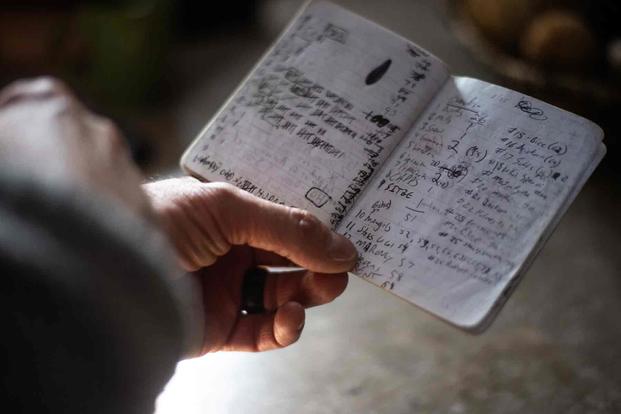
They had worked together on his 61st alert as a missileer. Trent was his commander when he went underground at the Juliet Missile Alert facility located in the vast and remote Montana plains.
Trent died at the age of 40 from non-Hodgkin lymphoma. Elevated levels of PCBs were found at Malmstrom, and one contaminated site was the Juliet Missile Alert Facility where Hunke and Trent worked together.
Hunke's journal, which once evoked nostalgia, now inspires dread. He was there in 2005 when the Air Force conducted its follow-up cancer study at Malmstrom, and officials proclaimed in their report that "sometimes, illnesses tend to occur by chance alone."
He felt like they weren't taking the probe seriously.
"I bet they're going to just tell us everything is fine, everything is safe," Hunke recalled saying to his fellow airmen at the time. "Yet you would look down into the bottom of the capsule ... and you'd see raw sewage sitting down there. You can just smell all of the chemicals that are going on, and so we're all kind of, like, skeptical."
Dozens of former missileers who have spent days at a time in the enclosed launch control centers recounted similar experiences to Military.com.
A Torchlight Initiative report detailed that maintenance dispatches, technical orders and warning labels at launch control centers show that "PCBs were present in the battery charger capacitors, filter monitors, power supply units, light ballasts, and in many electronic filter boxes and electrical capacitors used throughout the WS-133A-M and WS-133B Minuteman weapon systems."
Many troops would handle potentially PCB-coated components without gloves or other protective equipment.
PCBs have been linked to many health concerns involving the liver, skin, reproductive, endocrine, neurological and immune systems, according to research from the National Institutes of Health. They have been present in the launch control centers and launch facilities for all variants of the Minuteman weapon system since 1962.
Exposure could have happened when crews removed or replaced certain components or when water seeped into PCB-contaminated electrical boxes. Crew members could have walked through PCB residue, tracking it onto the launch control center's carpet -- or even into their own vehicles and homes.
When PCB oil dries, it creates a dust that can be inhaled or absorbed through skin.
Despite undergoing a brand-new study where they promised to look at new data, officials still refuse to say they missed the mark in addressing those cancer concerns.
"We all have hope, and we pray that the Air Force is going to do the right thing and be honest and forthright about everything," Hunke told Military.com. "It seems like they are but, boy, we were all skeptical."
Hunke told Military.com that he has become a "paranoid hypochondriac" since the news of a potential cancer cluster spread. He's constantly feeling for lumps on his neck, frequently calls his doctor, and every ache and pain brings him immediate concern.
He also carries some guilt.
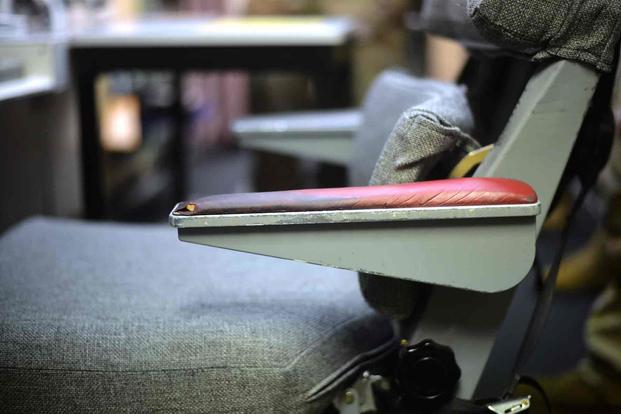
Hunke's son, Benjamin, decided to join the Air Force and wanted to work as a missileer, just like his father. He arrived at his first duty station this year, Malmstrom Air Force Base, in the same squadron. Hunke is proud of his son and is honored by his service to the country but, as a father, he's concerned.
Hunke wants the Air Force to act fast, to ensure the next generation feels safe in their jobs.
But Hunke worries that the reputation may already be tainted. He was going out to dinner with his son and his classmates when they graduated from technical school at Vandenberg Space Force Base in California and overheard discussion among them.
"All of those students were sitting around a table, it was the night after graduation, and one of them said, 'you know, we're all getting cancer, so it doesn't matter.'"
Hunke replied, "Guys, don't joke about that, because you don't know how real that is."
Going on Alert
Last year, Malmstrom and Minot both found levels of PCBs above the Environmental Protection Agency's threshold of 10 micrograms per 100 square centimeters. F.E. Warren Air Force Base also detected the carcinogen but below that threshold, the service said.
It was the first acknowledgment by military officials that dangers lurking in the launch control centers and missile alert facilities might be creating hazardous conditions for service members.
At F.E. Warren, a concrete bunker sits at the bottom of an elevator shaft that descends 60 feet beneath the frozen Great Plains soil. There, in January, two fresh-faced Air Force officers in their 20s were waiting and prepared, at a moment's notice, to unleash the nuclear missile buried underground with them.
Capt. William Young and 2nd Lt. Trevor Straub were in a launch control center for a Minuteman III intercontinental ballistic missile, located about an hour from the base. They sat in pilot chairs overlooking a massive computer terminal filled with switches, keyboards, screens and phones reminiscent of a 1970s television studio. The room is outdated and small, complete with a bathroom like those found on commercial airplanes and a small bed covered by a curtain.
Loud beeps from the computer terminal filled the small space, sending the two young men scrambling. They drew a curtain to keep their work out of view of this reporter and, a few clicks and a phone call later, the noise stopped. It could have been a test or a false alarm, but it clearly wasn't nuclear war -- at least not this time.
The job of guarding, operating and repairing the Minuteman III ICBM missile looks mostly the same at F.E. Warren in Wyoming, Malmstrom in Montana or Minot in North Dakota. The same as it has for decades.
It's a 24-hour mission, often followed by 48 hours off, that requires the young men and women to be ready at a moment's notice. They may need to fix electrical components, keyboards and more to make sure they are prepared at all times, despite substances that might be lurking in the equipment.
Col. Jared Nelson, the commander of the 90th Operations Group, which oversees missileers such as Straub and Young at F.E. Warren, said that, when he was a young missileer stationed at Minot, he "didn't really know to even ask the question" whether he had been exposed to anything during his service.
But he said those concerns shouldn't weigh heavily on his missileers' minds.
"I think it's not something that every day we're walking around moping around and going on and wondering, 'Do you have cancer? Do I have cancer?' That's not worth thinking about," Nelson said. "We don't believe day-to-day we're still in this environment that's going to kill us."
For the young officers in their 20s who are spending their days under the Great Plains, that mentality seems to carry over. They're not thinking about their future health, they're thinking about their current duties.
“We accept some of the inherent risk," Straub said when asked whether he was concerned about the ongoing cancer studies. "We have a mission to finish."
In response to those risks, Gen. Thomas Bussiere, the Air Force Global Strike commander, ordered cleanup efforts, no matter the amount, at all three of the bases.
"I want a deep understanding of any potential risk there is or could be to our airmen and Guardians and to the force," Bussiere said in a press release. "This is not about one base, one AFSC, or one rank. It's about all airmen of all [Air Force Specialty Codes] that support our mission and about all of our locations and operating environments."
In response, the U.S. Air Force School of Aerospace Medicine and the Defense Centers for Public Health collected air and swipe samples from launch control centers and launch control equipment buildings at all three ICBM bases.
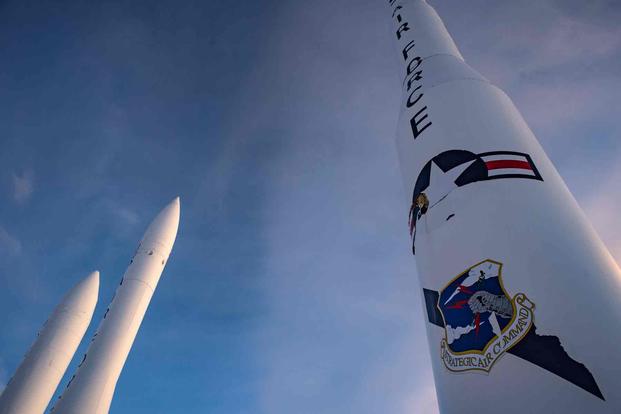
Soon, other bases will also be screened for environmental carcinogens.
Air Force officials said Vandenberg Space Force Base in California, which does rocket launches and missile tests, is also being reexamined. In mid-February, air, water, radon and PCB sampling was done, and those results are being analyzed.
"We will use the environmental sampling results from Vandenberg, historical documentation and a review of current operations to help us define what, if any, environmental sampling should be done at the [launch facilities]," Woodard, the commander of the U.S. Air Force School of Aerospace Medicine, told Military.com in December.
A third round of environmental sampling is scheduled for this spring, according to service officials. But in addition to examining more air, water, soil and surface samples in and around missile alert facilities and launch control centers, a larger health study is also ongoing.
"The study is not looking at only non-Hodgkin lymphoma," Woodard said. "So, we're really, as we do this, we're looking for 14 common cancers to make sure that we look at all those rates of cancers."
A town hall presentation from Air Force Global Strike Command shared with Military.com in December showed the service is also aiming its study at other generations of veterans who served at older Titan II and Minuteman II bases, the earlier variants of the ICBMs used as part of America's nuclear arsenal. That includes veterans who served at Ellsworth Air Force Base, South Dakota; Davis-Monthan Air Force Base, Arizona; Grand Forks Air Force Base, North Dakota; Whiteman Air Force Base, Missouri; McConnell Air Force Base, Kansas; and Little Rock Air Force Base, Arkansas.
Maj. Gen. Stacy Jo Huser, the commander of the 20th Air Force, which oversees ICBM operations, told Military.com in an interview at F.E. Warren that it's clear this study is personal.
"If you're a missileer, you have a best friend that has [non-Hodgkin lymphoma]," Huser said.
Retired Col. Jim Warner, a former missileer and the executive director of the Association of Air Force Missileers, told Military.com that his group has been closely following the issue and is helping the Air Force with its investigation. He also wonders how widespread the potential cancer cluster might be.
"Is it limited to operators or does the impact go into the maintenance, security forces, and support career fields? Is this a Minuteman problem or does it go back to Atlas, Titan and Peacekeeper?" Warner wrote last year. "I will defer to the Air Force to provide the answers. Sadly, this issue will be with us for many years to come."
Last year, when asked about the specific details of the cleanup and mitigation efforts, including whether missileers would be displaced from their routine workspaces, an Air Force Global Strike Command spokeswoman did not provide specifics, saying policies and procedures were being implemented by the workforces at those bases.
Since then, extensive cleanup efforts happened at Malmstrom and Minot but have not yet happened at F.E. Warren. Charles Hoffman, an Air Force Global Strike Command spokesman, told Military.com that service members assisted in those initial cleanup efforts and “cleaning continues.”
"Military bioenvironmental engineer teams have been conducting cleaning operations where mitigatable PCBs had been discovered," Hoffman said. "Using appropriate personal protective equipment and under the oversight of and partnership with bioenvironmental engineers, a small number of volunteer service members and civilians conduct the cleaning operations."
But he added that "in the future, PCB contractors will conduct cleaning operations" and said Air Force Global Strike Command is in the final stages of "securing a contract to clean PCBs at all missile wings."
Nelson, the commander of the 90th Operations Group at F.E. Warren, said he trusts that leadership is doing all they can to clean and mitigate carcinogens. He hopes missileers understand that people were building those facilities in the 1960s "in good faith" with what turned out to be toxic substances.
He said the job implicitly requires risk.
"I'm not saying there's an acceptable level that we have now, but I'm just saying that we come into this wearing the uniform, knowing that sometimes we're in an environment where risk is," Nelson added. "That's what you do in order to get the mission done. ... I'm not looking for a job with zero risk."
Grappling with Grief, Fighting for Benefits
Many missileers who have been diagnosed with cancer have had difficulties applying for and receiving VA benefits. This is due, in part, to a large number of them not believing they were eligible. Some have been told their illness or injury was not connected to service or that their diagnosis occurred long after separation.
Under the passage of the 2022 PACT Act, millions of sick veterans obtained health care and disability compensation for a variety of environmental exposures abroad. It was one of the largest expansions of VA benefits in the history of the agency.
But that act didn't cover compensation for most toxic exposures within the U.S. beyond health care, leaving these missileers behind.
As a newlywed stationed at Malmstrom, Jenny Holmes watched her husband Mark pull dozens of alerts in the missile fields, never speaking of his experiences, problems or frustrations.
She remembers him once saying, "The job is awful," but he didn't go into detail about it. She remembers him stripping out of his flight suit after he'd been underground for 24 hours on alert, shedding the uniform, which smelled strongly of chemicals, in the garage and running into the house to shower and put on fresh, clean clothes.
She remembers him believing deeply in the mission and wanting to follow in the footsteps of his father, who was also a missileer.
She remembers in 2018 when her husband was struggling with deep fatigue and started to have night sweats and some weight loss. In 2019, she saw his eyes turn yellow and learned that his liver, spleen, gallbladder and lymph system on his right side were all covered in cancer. Mark was diagnosed with non-Hodgkin lymphoma.
He began losing weight, losing his ability to focus, losing his ability to be the active dad for their three children. On May 12, 2020, after 16 months of treatment, he died at the age of 37 -- 30 years younger than the average patient diagnosed with non-Hodgkin lymphoma.

"Our children have lost an incredible dad, a dad who read them bedtime stories and snuggled with them. He chased them for hours," Jenny Holmes told Military.com in an interview at her home in Colorado Springs. "But more importantly, they lost a future of making memories with him."
Since 2021, 10 months after his death, Jenny Holmes has been grappling with her grief and fighting with the Department of Veterans Affairs, which has repeatedly denied death benefits related to her husband because, at the time of his diagnosis, he was a reservist who was not on active orders.
She has been trying to secure compensation for his death, as well as expanded GI Bill education benefits for her family, which would offer her peace of mind and financial security as she raises their children alone.
She and Mark's father, Dan Holmes, have emailed lawmakers, spent countless hours on the phone, and worked tirelessly to share their story.
"With all that Jenny has gone through, her claim with the VA to get the benefits for her and their three kids that they deserve is an unnecessarily painful and more than frustrating process, and has gone on for over a year now," Dan Holmes, a retired lieutenant colonel and former missileer himself, told Military.com in an email.
A few former missileers have had success after advocating for VA benefits connected to possible toxic exposure during their service.
One of them is a former missile combat crew commander at Malmstrom named Jackie. She was diagnosed with non-Hodgkin lymphoma in 2018 at age 42.
In 2020, after a long fight, Jackie was able to secure benefits, in part, because she held onto a copy of Air Force Form 55, the Employee Safety and Health Record she signed in 2001, which warned her about exposure to chemicals, fuels, rodents, asbestos, PCBs and lead, among other contaminants.
"Navigating the VA claims processes, especially 12 years after military separation, is not for the faint of heart," Jackie wrote on Torchlight's website.
Jenny Holmes is grateful that a community like Torchlight exists, not just to help support her through her grief and the complicated VA benefits process, but also to spread awareness to current and former missileers.
But, if she had her way, and if the Air Force had paid attention to past warnings and concerns, Jenny Holmes believes a support system like that would have never been necessary in the first place.
"With all of that said, I do believe this community could have been prevented," she told Military.com. "While it is a blessing, I wish I wouldn't have to be part of it, and I certainly don't want any more members."
